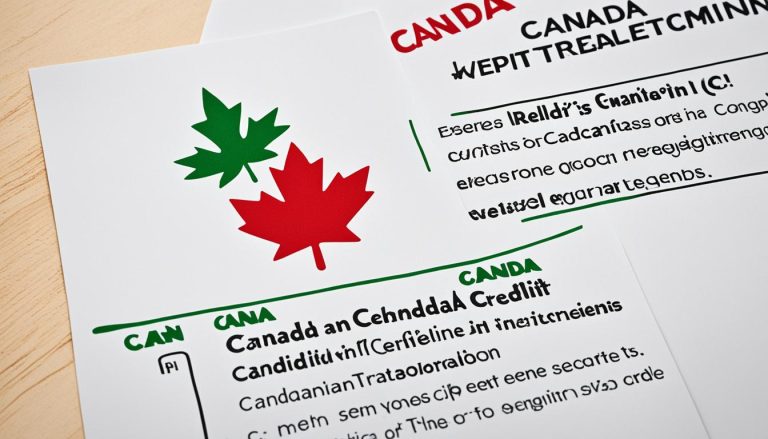Whole life insurance is a type of permanent life insurance that provides coverage for your entire life, as long as you continue to pay the premiums.
Unlike term life insurance, which only covers you for a specific period, whole life insurance guarantees a death benefit payout to your beneficiaries and also builds a cash value component over time.
This cash value can grow at a fixed rate and offers various financial benefits while you’re alive. In Canada, whole life insurance is seen as both a tool for financial security and a conservative investment vehicle.
It’s especially useful for individuals who want long-term coverage, a savings element, and predictable premiums that don’t increase with age. If you are looking to combine life insurance with a savings plan, whole life insurance could be the right choice.
What Is Whole Life Insurance?

Whole life insurance is designed to last your entire lifetime, provided you keep paying the premiums. It’s different from term life insurance, which only lasts for a specific number of years. The main components of a whole life policy include:
- Lifelong Coverage: As long as premiums are paid, whole life insurance provides coverage that doesn’t expire. Upon death, the beneficiaries will receive the agreed-upon death benefit.
- Fixed Premiums: One of the biggest advantages of whole life insurance is that your premiums remain the same for the life of the policy. Unlike term life insurance, where premiums may increase after each term renewal, whole life insurance ensures cost predictability.
- Cash Value Accumulation: A portion of the premiums you pay goes into a savings account known as the cash value. This cash value grows at a fixed rate over time, providing a financial cushion that you can borrow against, withdraw, or use to pay future premiums.
For Canadians, whole life insurance offers a way to provide financial protection for loved ones while also contributing to long-term financial goals.
How Does Whole Life Insurance Work?

Whole life insurance operates through two primary components: the death benefit and the cash value, both of which offer distinct advantages for policyholders over their lifetime.
1. Premiums
You are required to pay regular premiums, which can be done on a monthly, quarterly, or annual basis. These premiums are higher than term life insurance because they serve a dual purpose.
Part of the payment goes toward funding the death benefit, which is the amount your beneficiaries will receive upon your passing.
The other portion contributes to the cash value—a savings or investment component unique to whole life insurance. Unlike term policies, which solely cover the cost of insurance, whole life insurance gradually builds a financial asset over time.
By consistently paying your premiums, you ensure that your policy remains active for your entire life, with no risk of expiring after a certain period like term policies.
2. Cash Value
The death benefit is a lump sum paid to your beneficiaries when you pass away. This payout is generally tax-free, providing significant financial relief to your loved ones in their time of need.
The death benefit amount is determined when the policy is initially purchased and typically remains unchanged throughout your lifetime.
However, if you borrow against the policy’s cash value and do not repay the loan, the outstanding balance is subtracted from the death benefit.
This feature allows you to access funds while alive but reduces the eventual payout to your beneficiaries if not repaid in full.
3. Cash Value
Over time, a portion of your premiums accumulates in the cash value account of your policy. This cash value grows at a guaranteed interest rate set by the insurance company, making it a stable, low-risk financial asset.
It acts as a type of savings vehicle that you can access during your lifetime. There are several ways to use this cash value:
- Borrowing Against It: You can take out a loan against your cash value at a competitive interest rate. However, any outstanding loans will reduce the death benefit unless repaid.
- Withdrawals: You can withdraw funds from the cash value, although this will likely reduce the death benefit that your beneficiaries receive.
- Premium Payments: After a certain period, you may use the cash value to pay future premiums, essentially allowing the policy to “self-fund.” This is particularly useful if you reach a point where paying premiums becomes financially burdensome.
The cash value grows tax-deferred, meaning you won’t have to pay taxes on it as it accumulates, making it an attractive savings tool.
4. Dividends
Some whole life insurance policies, especially those offered by mutual insurance companies, pay dividends to policyholders.
Dividends are essentially a share of the company’s profits and are not guaranteed but can be a significant benefit when offered. These dividends provide policyholders with flexibility and can be used in several ways:
- Increase Cash Value: Reinvesting the dividends into the policy can accelerate the growth of your cash value, providing even more funds you can access in the future.
- Pay Premiums: You can use the dividends to reduce or fully cover your premium payments, effectively lowering the cost of maintaining the policy.
- Cash Payouts: Alternatively, dividends can be taken as cash payouts, providing extra income. This option allows you to benefit from the financial success of the insurer without needing to reinvest in the policy.
Dividends offer an added layer of value for policyholders, particularly for those seeking a way to maximize the return on their whole life insurance investment.
What Are the Key Components of Whole Life Insurance?
| Component | Function |
|---|---|
| Premiums | Regular payments, part of which funds cash value growth |
| Death Benefit | Lump sum paid to beneficiaries upon policyholder’s death |
| Cash Value | Grows over time, can be borrowed against or withdrawn |
| Dividends | Optional payouts from the insurer to the policyholder |
What Are the Key Benefits of Whole Life Insurance?

Whole life insurance offers several significant advantages, especially for Canadians seeking both security and long-term financial growth.
1. Guaranteed Death Benefit: Regardless of when you pass away, your beneficiaries are guaranteed to receive the death benefit as long as you have kept up with your premiums.
2. Cash Value Accumulation: Over time, the cash value of your policy grows at a fixed rate. This growth is tax-deferred, which means you won’t pay taxes on the cash value while it’s accumulating. The cash value can be accessed through policy loans or withdrawals, offering financial flexibility during your lifetime.
3. Stable Premiums: With whole life insurance, you’ll pay the same premium amount throughout the life of your policy. This is different from other insurance types like term life, where premiums may increase as you age or after your policy expires.
4. Tax Benefits: In Canada, both the cash value accumulation and the death benefit are generally tax-free, providing a distinct financial advantage. This makes whole life insurance an excellent tool for estate planning and wealth transfer.
5. Policy Loans: You can borrow against the cash value of your policy at any time. The loan must be repaid with interest, but there’s no strict timeline for repayment. However, unpaid loans will reduce the death benefit that your beneficiaries receive.
6. Dividends: Some policies pay dividends, which can be reinvested in the policy, used to lower your premiums, or taken as cash. Dividends aren’t guaranteed but can offer additional financial benefits.
How Does Cash Value Grow in Whole Life Insurance?

The cash value in a whole life insurance policy grows in two ways:
- Guaranteed Interest: The cash value earns interest at a rate set by the insurance company. This interest rate is fixed, ensuring stable growth over time. This makes whole life insurance a low-risk financial product compared to stock market investments, where returns can fluctuate.
- Dividends (if applicable): If your policy includes dividends, these can be reinvested into the cash value, helping it grow faster. Mutual insurance companies in Canada, like Sun Life or Canada Life, may offer such dividend-paying policies.
What Are the Ways Cash Value Grows in Whole Life Insurance?
| Growth Method | Description |
|---|---|
| Guaranteed Interest | Fixed interest rate applied to cash value by the insurer |
| Dividends | Optional, paid by mutual insurance companies |
| Withdrawals/Loans | Accessible through loans or withdrawals during policyholder’s life |
What Are the Drawbacks of Whole Life Insurance?

While whole life insurance has many advantages, it’s important to be aware of its potential drawbacks:
1. Higher Premiums: Whole life insurance tends to be more expensive than term life insurance because of its dual function as both a savings vehicle and an insurance policy. The higher premiums may not be affordable for everyone, especially younger individuals or those on a tight budget.
2. Complexity: Whole life insurance policies are more complex than term life insurance. They include many options for cash value growth, dividends, and loans, which may not be suitable for everyone, particularly those who just need straightforward coverage.
3. Lower Returns: While the cash value component provides steady growth, the returns are usually lower than other investment products like stocks, bonds, or mutual funds. If you’re looking for higher returns, whole life insurance may not be the best financial product.
4. Long-Term Commitment: Whole life insurance is a long-term financial commitment. If you stop paying premiums, you risk losing both your insurance coverage and part of the accumulated cash value.
Who Should Consider Whole Life Insurance?

Whole life insurance may not be the right fit for everyone, but it’s particularly beneficial for individuals who need:
1. Lifelong Coverage
If you’re looking for a life insurance policy that guarantees coverage no matter how long you live, whole life insurance is an ideal solution. Unlike term life insurance, which only provides coverage for a set number of years, whole life insurance remains in effect for your entire lifetime as long as premiums are paid.
This makes it a particularly popular choice for individuals with long-term financial dependents, such as young children or family members with special needs, who may require lifelong support.
By ensuring a guaranteed death benefit, whole life insurance can provide financial peace of mind, knowing that your loved ones will be taken care of when you’re no longer there.
2. Estate Planning
Whole life insurance is frequently utilized as a strategic tool in estate planning. The death benefit from a whole life policy can be used by your beneficiaries to cover estate taxes, debts, or other expenses that arise after your passing.
This is especially important for individuals with significant assets, as the death benefit can prevent your heirs from having to sell off parts of the estate to cover taxes or liabilities.
Moreover, because the death benefit is generally tax-free in Canada, it ensures that your wealth is passed on without being diminished by tax obligations.
This makes whole life insurance a valuable asset for preserving family wealth across generations and providing a tax-efficient way to transfer financial security.
3. Savings and Investment
For those who seek a conservative and low-risk method to accumulate savings while simultaneously securing life insurance coverage, whole life insurance offers a unique advantage.
The cash value component of a whole life policy grows over time at a guaranteed interest rate, allowing it to serve as a form of forced savings.
While the returns on cash value are generally more modest compared to higher-risk investments like stocks or real estate, they are steady and predictable, making it an appealing option for individuals who prefer financial stability.
Additionally, the tax-deferred nature of the cash value growth means that you won’t have to pay taxes on it as it accumulates, further enhancing its appeal as a long-term savings tool.
4. Children’s Policies
Many parents or grandparents choose to purchase whole life insurance policies for their children or grandchildren as a long-term investment in their financial security.
These policies can be particularly beneficial because they lock in a lower premium rate for the insured child, ensuring affordable coverage throughout their life.
As the child grows older, the policy can be transferred to them, providing them with lifelong coverage at a rate that was set when the policy was first purchased.
This not only guarantees life insurance coverage but also allows the policy’s cash value to grow over time, which can later be used by the child for significant life events, such as paying for education, buying a home, or starting a business.
Is Whole Life Insurance a Good Investment?
Whole life insurance is often viewed as a conservative investment because of its stability and guaranteed cash value growth. However, the returns on a whole life policy are typically lower than other investment vehicles like stocks, real estate, or mutual funds.
- Pros as an Investment: Whole life insurance offers guaranteed growth, tax benefits, and the ability to access the cash value. It’s a good choice for risk-averse individuals looking for stable, long-term financial growth.
- Cons as an Investment: If you’re seeking high returns, whole life insurance may not be the best investment option. The growth of the cash value is often slow compared to riskier investment options like equities or real estate.
How Can You Get the Best Whole Life Insurance Policy in Canada?

To ensure you’re getting the best whole life insurance policy for your needs, follow these steps:
- Compare Providers: Canadian insurers like Sun Life, Canada Life, and Manulife offer different whole life insurance policies. Compare their rates, features, and customer service ratings to find the best fit.
- Consider Policy Riders: Many whole life policies can be customized with riders such as disability income, critical illness coverage, or child term riders, allowing you to tailor the policy to your needs.
- Understand the Terms: Make sure you understand the terms of your policy, including how premiums work, how cash value is accumulated, and the fees associated with loans or withdrawals.
- Consult an Advisor: Speak with an independent insurance advisor who can compare multiple policies and help you find the right one for your needs.
How Do Premiums Work in Whole Life Insurance?
The premiums you pay for whole life insurance are usually higher than for term life insurance because they fund both the death benefit and the cash value accumulation.
However, these premiums are fixed, meaning they won’t increase as you age or if your health deteriorates, which provides long-term cost stability.
This fixed premium makes budgeting for life insurance easier, as you won’t face unexpected increases. Additionally, some whole life policies offer the option to pay premiums over a set period (e.g., 10, 20 years) or until a specific age, after which the policy becomes “paid-up,” meaning no further payments are needed while coverage continues.
This can be especially helpful for policyholders planning for retirement, ensuring that life insurance costs won’t burden them later in life.
What Happens If You Cancel a Whole Life Insurance Policy?
If you choose to cancel your whole life insurance policy, you will receive the surrender value, which is the cash value of your policy minus any fees or penalties.
However, you may lose part of the accumulated cash value and your beneficiaries will no longer receive the death benefit.
Some alternatives to cancellation include:
- Using the cash value to pay premiums if you are struggling to keep up with payments.
- Borrowing against the policy instead of cancelling it.
Cancelling should be considered only after reviewing your financial situation carefully.
Conclusion
Whole life insurance offers lifelong protection and an investment component, making it an appealing option for those seeking long-term financial security and a savings vehicle. The guaranteed death benefit, stable premiums, and cash value accumulation provide benefits that extend beyond traditional life insurance.
However, with its higher premiums and slower cash value growth compared to other investment products, whole life insurance may not be the best fit for everyone.
It’s essential to weigh the pros and cons based on your financial goals and needs. For Canadians looking for security, estate planning, and predictable savings, whole life insurance could be a valuable addition to their financial portfolio.
FAQs About Whole Life Insurance
Can you borrow money from a whole life insurance policy?
Yes, policyholders can borrow against the cash value of their whole life insurance policy. However, the loan must be repaid with interest, or it will reduce the death benefit.
Is whole life insurance tax-free in Canada?
Yes, the death benefit is generally paid out tax-free to your beneficiaries. Additionally, the cash value grows on a tax-deferred basis, meaning you don’t pay taxes on it as it accumulates.
What happens to the cash value when you die?
When you pass away, the cash value typically goes back to the insurance company, and your beneficiaries receive the death benefit. Some policies offer options where a portion of the cash value may be included in the payout.
Can whole life insurance be used for estate planning?
Yes, whole life insurance is often used for estate planning. It ensures a tax-free inheritance for your beneficiaries and can help pay for estate taxes or other expenses.
How are dividends paid on whole life insurance?
Dividends are paid by mutual insurance companies based on their profits. You can reinvest these dividends to grow your cash value, use them to pay premiums, or take them as cash.
How long do you have to pay premiums on a whole life insurance policy?
Premiums are generally paid for life, but some policies offer paid-up options after a certain number of years, meaning no further premiums are required.
What is the difference between whole life insurance and term life insurance?
Whole life insurance offers lifelong coverage and cash value accumulation, whereas term life insurance provides coverage for a specific term, typically with no savings component.




